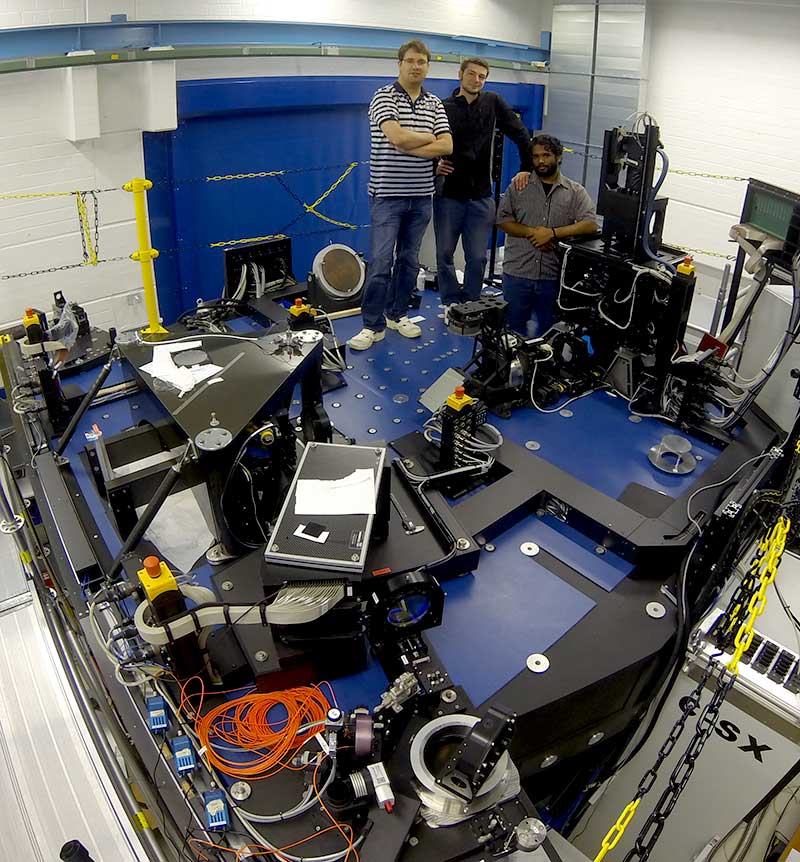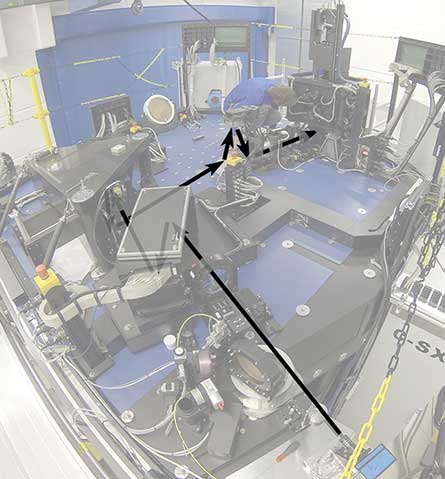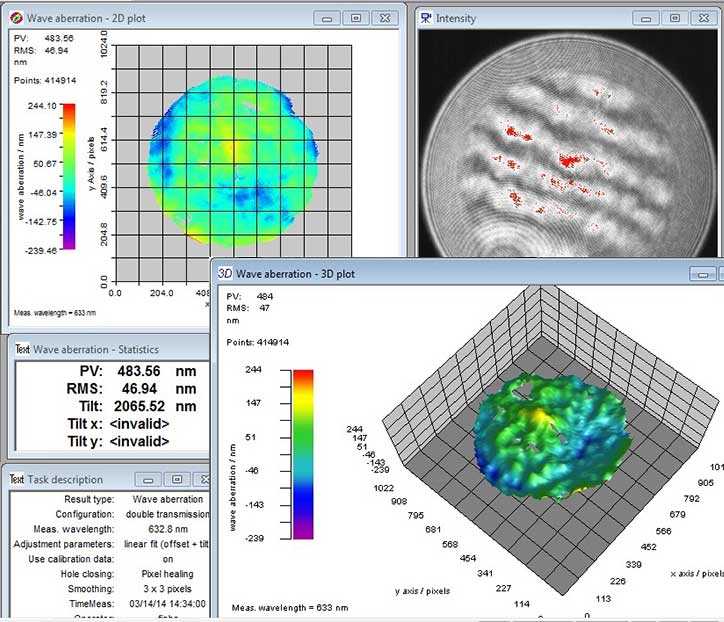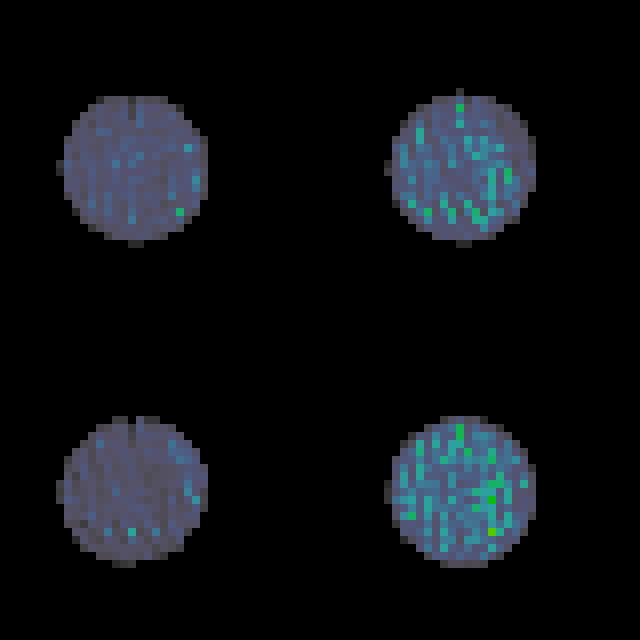SX Warm Optics Aligned! – May 2014
On May 23, The LN team completed the laboratory alignment of the left (SX) half of the LINC-NIRVANA warm optics. This involved adjusting a total of ten lenses, eight mirrors, and a filter to bring the light from the telescope focal plane to the Mid-High Wavefront Sensor (MHWS) with exceptional delivered optical quality.
Congratulations to the bench alignment team, especially Peter Bizenberger, Thomas Bertram, Luca Marafatto, Kalyan Radhakrishnan, Javier Moreno-Ventas, and Matteo Lombini.

Thomas Bertram, Luca Marafatto, and Kalyan Radhakrishnan pose proudly with the optics for which they have just completed the alignment. They are standing at the mount locations of the right (DX) arm of the instrument. The large unoccupied region in the lower middle-right will host the Ground Layer Wavefront Sensor, which is currently at LBT. The image at right shows the optical path.

Light from the telescope enters at lower right and passes through the collimating lenses before bouncing off a flat mirror. The second reflection takes place at the surface of a 349 actuator deformable mirror (with cables) before continuing on to the midline of the instrument. Reflections off the piston mirror and a visible-infrared dichroic send the radiation to the FP20 lens system at upper right. A large field de-rotator precedes a filter and final mirror, which sends the light upward into the wavefront sensor.
Peter Bizenberger working on the alignment of the "K-mirror" field de-rotator. The Mid-High Wavefront Sensor (MHWS) sits to Peter's right.

Interferogram demonstrating that the total wavefront error of the 30 optical surfaces leading to the MHWS is less than 50 nm RMS, a value that is dominated by uncorrected residual error on the deformable mirror.
This animation was captured from the data stream emerging from the Mid-High Wavefront Sensor. The four images result from splitting of the incoming light by small glass pyramids centered on each reference "star" (optical fibers in this lab measurement). The movie begins by demonstrating how subsequent "stars" build up the "meta-pupil" which covers the needed area of higher altitude turbulence. With the three stars in place, the team then adjusted the conjugation altitude of the wavefront sensor. When they overlap, the sensor is focused on ground-layer turbulence. In LINC-NIRVANA, sensing this turbulence is the job of a different wavefront sensor, called the Ground-Layer Wavefront Sensor (GWS). The GWS does not appear in any of these photographs, because it is currently being tested and used on the telescope as part of the Pathfinder experiment.

Individual pupils from multiple stars add up to the full metapupil.
